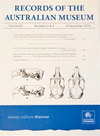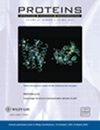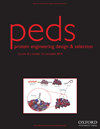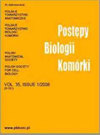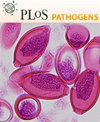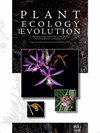JOURNAL OF MOLECULAR RECOGNITION
SCI/SCIE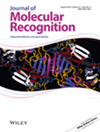
- 雜志名稱:分子識別雜志
- 簡稱:J MOL RECOGNIT
- 期刊ISSN:0952-3499
- 大類研究方向:生物
- 影響因子:1.919
- 數據庫類型:SCI/SCIE
- 是否OA:No
- 出版地:ENGLAND
- 年文章數:74
- 小類研究方向:生物-生化與分子生物學
- 審稿速度:較慢,6-12周
- 平均錄用比例:一般
官方網站:http://onlinelibrary.wiley.com/journal/10.1002/(ISSN)1099-1352
投稿網址:http://mc.manuscriptcentral.com/jomr
JOURNAL OF MOLECULAR RECOGNITION
英文簡介Journal of Molecular Recognition (JMR) publishes original research papers and reviews describing substantial advances in our understanding of molecular recognition phenomena in life sciences, covering all aspects from biochemistry, molecular biology, medicine, and biophysics. The research may employ experimental, theoretical and/or computational approaches.The focus of the journal is on recognition phenomena involving biomolecules and their biological / biochemical partners rather than on the recognition of metal ions or inorganic compounds. Molecular recognition involves non-covalent specific interactions between two or more biological molecules, molecular aggregates, cellular modules or organelles, as exemplified by receptor-ligand, antigen-antibody, nucleic acid-protein, sugar-lectin, to mention just a few of the possible interactions. The journal invites manuscripts that aim to achieve a complete description of molecular recognition mechanisms between well-characterized biomolecules in terms of structure, dynamics and biological activity. Such studies may help the future development of new drugs and vaccines, although the experimental testing of new drugs and vaccines falls outside the scope of the journal. Manuscripts that describe the application of standard approaches and techniques to design or model new molecular entities or to describe interactions between biomolecules, but do not provide new insights into molecular recognition processes will not be considered. Similarly, manuscripts involving biomolecules uncharacterized at the sequence level (e.g. calf thymus DNA) will not be considered.Typical techniques would include synthesis of topological mimics, site directed mutagenesis or molecular imprinting, together with biophysical methods for the quantitative measurement of molecular interactions. Specific methods such as AFM, Optical Tweezers, SPR, Biosensors and Microcalorimetry, and the range of analytical methods such as NMR, MRI, MS, GC, LC, HPLC, PET, and Crystallography may be used to establish the mechanisms, dynamics and forces of molecular recognition processes. Theoretical and Computational Methods aid the modeling, prediction, simulation and design of molecular recognition processes. Mechanistic understanding at a molecular level can be aided by computational approaches such as molecular electrostatic analysis, molecular dynamics simulations and free energy calculations.
JOURNAL OF MOLECULAR RECOGNITION
中文簡介分子識別雜志(JMR)出版了原始的研究論文和評論,描述了我們在理解生命科學中的分子識別現象方面的重大進展,涵蓋了生物化學、分子生物學、醫學和生物物理學的所有方面。研究可采用實驗、理論和/或計算方法。該雜志的重點是涉及生物分子及其生物/生化伙伴的識別現象,而不是對金屬離子或無機化合物的識別。分子識別包括兩個或多個生物分子、分子集合體、細胞模塊或細胞器之間的非共價特異性相互作用,如受體配體、抗原抗體、核酸蛋白、糖凝集素等。該雜志邀請的手稿,旨在實現一個完整的描述分子識別機制之間的結構,動力學和生物活性方面的特征良好的生物分子。這些研究可能有助于未來新藥和疫苗的開發,盡管對新藥和疫苗的實驗測試不在該雜志的范圍之內。描述設計或建模新分子實體或描述生物分子間相互作用的標準方法和技術的應用的手稿,但不提供對分子識別過程的新見解,將不予考慮。同樣,涉及未在序列水平上進行特征描述的生物分子的手稿(例如小牛胸腺DNA)將不予考慮。典型的技術包括拓撲模擬的合成、位點定向突變或分子印跡,以及定量測量分子相互作用的生物物理方法。AFM、光學鑷子、SPR、生物傳感器和微熱量測量等特定方法,以及NMR、MRI、MS、GC、LC、HPLC、PET和結晶學等一系列分析方法,可以用來建立分子識別過程的機理、動力學和力。理論和計算方法有助于分子識別過程的建模、預測、仿真和設計。在分子水平上的力學理解可以借助于計算方法,如分子靜電分析、分子動力學模擬和自由能計算。
精選同類領域期刊,熱門推薦輕松get~
-
- RECORDS OF THE AUSTRALIAN MUSEUM
- 期刊ISSN:0067-1975
- 大類研究方向:生物
- 影響因子:0.400
- 數據庫類型:SCIE
- 咨詢投稿
-
- PROTEINS-STRUCTURE FUNCTION AND BIOINFORMATICS
- 期刊ISSN:0887-3585
- 大類研究方向:生物
- 影響因子:
- 數據庫類型:SCI/SCIE
- 咨詢投稿
-
- PROTEIN ENGINEERING DESIGN & SELECTION
- 期刊ISSN:1741-0126
- 大類研究方向:生物
- 影響因子:1.952
- 數據庫類型:SCI/SCIE
- 咨詢投稿
-
- POSTEPY BIOLOGII KOMORKI
- 期刊ISSN:0324-833X
- 大類研究方向:生物
- 影響因子:0.106
- 數據庫類型:SCIE
- 咨詢投稿
-
- PLoS Pathogens
- 期刊ISSN:1553-7366
- 大類研究方向:生物
- 影響因子:7.464
- 數據庫類型:SCI/SCIE
- 咨詢投稿
-
- Plant Ecology and Evolution
- 期刊ISSN:2032-3913
- 大類研究方向:生物
- 影響因子:
- 數據庫類型:SCIE
- 咨詢投稿
精選常見問題,答疑解惑輕松get~
- 三篇ssci論文怎么同時投出去
- 中文核心和sci哪個影響力更大
- 中科院一區和JCR一區期刊占比區別
- 發ssci如何快速找合適的期刊
- 資源保護方面論文投sci指導
- 外貿行業論文發ssci周期長嗎
- 國外的sci投到錄用一般多久
- ssci期刊國內認可度
- 核能應用論文翻譯英文發sci容易的方法
- 人口老齡化研究論文符合ssci領域嗎
- sci開源和不開源分別是什么意思?有什么影響?
- ssci發表是高水平學術論文嗎
- 生態修復主題英文論文會收錄哪些數據庫
- 哲學專業論文發英文期刊
- 中科院sci四個區的劃分
- ssci期刊和sci期刊的區別
- ESCI和SCIE要分清
- ssci送審論文多久出結果
- ssci論文二作有用嗎
- 水土保持類英文期刊好選嗎
- ssci期刊論文一定會檢索嗎
 投稿咨詢
投稿咨詢

